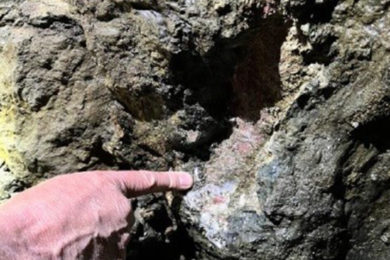CET Grid Analysis software has been developed by the Centre for Exploration Targeting (CET) within The University of Western Australia (UWA), supported by Barrick Gold. CET Grid Analysis, designed for mineral exploration geophysicists and geologists looking for discontinuities within magnetic and gravity data, is being marketed and distributed by Geosoft as a new Oasis montaj plus third party extension. It provides a step-by-step trend detection menu that offers Texture analysis-based image enhancement, suitable for analysing regions of subdued magnetic or gravity responses where texture analysis can first enhance the local data contrast, and Discontinuity structure detection, useful in identifying linear discontinuities and edge detection.The sophisticated algorithms behind CET Grid Analysis were created by the Geophysics and Image Analysis Group at CET, part of the UWA’s School of Earth and Environment. CET is supported through a partnership between UWA, Curtin University of Technology, and the mineral exploration industry.
Associate Professor Eun-Jung Holden worked with Professor Mike Dentith, Dr. Peter Kovesi and Shih Ching Fu to develop the methodology used for the software. “Through CET’s industry networks and sponsors, our team has had access to exploration industry companies, specifically Barrick Gold, for this project,” said Holden. Barrick Gold provided already-analysed datasets for testing of the algorithms and initial processing of potential field data with the CET Grid Analysis tools showed a good correlation with known structure and geology.
CET Grid Analysis has become an indispensable tool for Barrick Gold in its African gold mines around Lake Victoria in Tanzania in Africa. “The most relevant application has been to assist in mapping dislocations and gradient changes commonly associated with greenstone gold deposits in the Lake Victoria Goldfields,” explains Matthew Hope, Barrick Gold’s Project Geophysicist for Africa/Eurasia.
The identification and mapping of these features makes CET Grid Analysis useful to explorers because the time-saving modules are essentially automatic interpretation tools that provide a first pass lineament detection on gridded/image data.
“Exploration teams have a lot of data to sift through and don’t have a long time to do it,” says Louis Racic, Geosoft’s Product Management Director. “CET Grid Analysis software produces the mapping data they need in a time-saving manner.”
The CET Grid Analysis extension for Oasis montaj contains tools for texture analysis, phase analysis, and structure detection and quickly provides a first-pass automated lineament interpretation of gridded data. As explorers often have large volumes of gridded data to interpret, this automatic approach provides an unbiased interpretation and improves the speed with which one can interpret gridded data.
CET Grid Analysis Key Benefits
- Provides access to new layers of information assisting with the interpretation of magnetic and gravity data
- Works fast as a productivity aid for all explorers to help create a first pass unbiased view of the data
- Can be used in regional scale or property scale data sets
- Versatile as the tools can be used on different data and in different ways
- Includes two workflows, one for analysing regions of subdued magnetic or gravity responses where texture analysis can first enhance the local data contrast to find discontinuities and one for identifying data edge structures.








